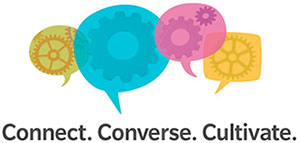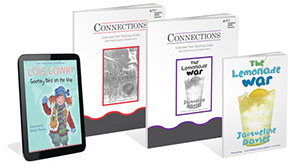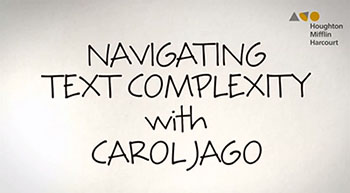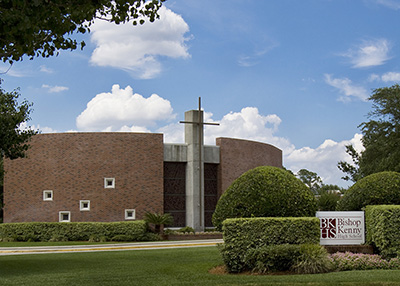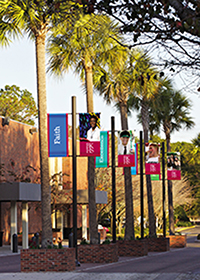
Private and Parochial School Newsletter |
|||
10 Words to the Wise! 10 Most Commonly Misused WordsOriginally pinned from: http://www.dailyfailcenter.com/147508
|
|
||
Context, Conversation and Non-Verbal Clues.Susan Magsamen, SVP of Early Learning, Houghton Mifflin Harcourt Young children are natural experts when it comes to learning critical skills. Unlike other mammals, babies
In 1995, University of Kansas researchers Betty Hart and Todd Risley published a seminal study on vocabulary acquisition in preschool aged children, Meaningful Differences in the Everyday Experiences of Young American Children. Hart and Risley spent over two years studying the lives of 42 families of varied socioeconomic backgrounds, discovering substantial differences in how families spoke with children and how many words children were exposed to regularly. This research underscored the core principle that exposure to language early and often is crucial in preparing young children for success and closing achievement gaps at the elementary school level. But language is not only about verbal skills and words. Context, gesture and environmental awareness are key factors in the way humans communicate, and young learners pay close attention here as well. Erica Cartmill, Assistant Professor of Anthropology at UCLA, has produced fascinating research on the dynamic relationship between early social interactions and infant communicative development. Her research reinforces the theory that preschool vocabulary is a major predictor of school success, with particular focus on the role that both verbal and nonverbal forms of communication play in language acquisition. She notes that gesture in particular is an essential tool for children before they are fluid with verbal language. As we can easily imagine, most of the words very young children acquire are derived from their parents’ vocabulary. But more than hearing words, the non-verbal clues that parents give toddlers about words are part of the context of learning, and influence the depth of children’s vocabularies upon entering school. As parents and caregivers, we can take advantage of the experiences we share with our children to support language acquisition, especially if we keep in mind their perspective. Here are our top six practical, everyday suggestions to help boost vocabulary in early learners:
|
Regional Education Summits- Coming to a city near you!Houghton Mifflin Harcourt is pleased to announce our summer Education Summit event series “Connect Converse. Cultivate.”
Further, we will be there with our industry expertise and powerful full-scale solutions to equip you with the confidence you need to face the challenges moving forward and end-to-end offerings to effectively impact your school’s success and your students’ achievement. To view cities and dates, visit our registration site today! We look forward to seeing you this summer! |
Product SpotlightConnections Extended Text Teaching Guides are perfectly matched with your favorite fiction and
Learn more about Connections here. |
Professional Development Corner—HMH Education ServicesNavigating Text Complexity with Carol Jago
Text complexity is something all teachers struggle with when selecting reading for their class. They can look at lexile levels, but that doesn't always represent that text complexity or deeper meaning of the text. Houghton Mifflin Harcourt Program Consultant Carol Jago discusses the considerations for navigating text complexity in this excerpt from one of a series of on-demand, point-of-use professional development podcasts. |
Private and Parochial School of the MonthBishop Kenny High School —Jacksonville, Florida
The integration of technology on campus is not limited to the device. Instead, having devices in the hands of teachers and students has changed the dynamics of learning by offering limitless opportunities.In one example of this, the school’s Social Studies department has adopted HMH’s iBooks for World History, U.S. History, U.S. Government and World Geography. According to department chairman Michael Broach, “The embedded multimedia content of the iBooks series has helped provide a more differentiated approach to student learning in our social studies classrooms.”
In addition, faculty meetings now take a “flipped” approach where business items are sent out in advance via email and video messages so that meeting time can be used in hands-on activities for faculty members. As a result of its thorough deployment of its 1:1 device initiative, Bishop Kenny High School has not only implemented new technology but succeeded in transforming education on its campus to even better prepare students for the future. Is your school a leader? Do you have a great success story you’d like to share? Tell us about it and you could see your school featured in a future edition!
|
Financial Resources to Help Your School ExcelEducation Grants from the Kinder Morgan Foundation are primarily directed to educational programs for youth in Grades K–12. Funding is provided to local, state, provincial and regional educational institutions, libraries and programs that provide ongoing support, such as Junior Achievement. The foundation also supports youth programs provided by local arts organizations, symphony orchestras, museums and others. Find more grants with our Free Grant Database. |
Monthly PollLast month’s poll results: Typically, how do you first find out about new books to read in your classroom?
This month's question: What role do you think STEM (Science, Technology, Engineering and Math) plays in the future of education?
See how you compare next month when we reveal the poll results! |
Our Vision: From the Desk of HMH® Leadership“To meet the challenges facing education across the US and beyond, it's going to take experimentation and the incubation of new ideas. Digital innovation has the power to enable the transformation of the learning experience, but we know we've only scratched the surface,” ——says Brook Colangelo, Chief Technology Officer at HMH. - See more here. |


